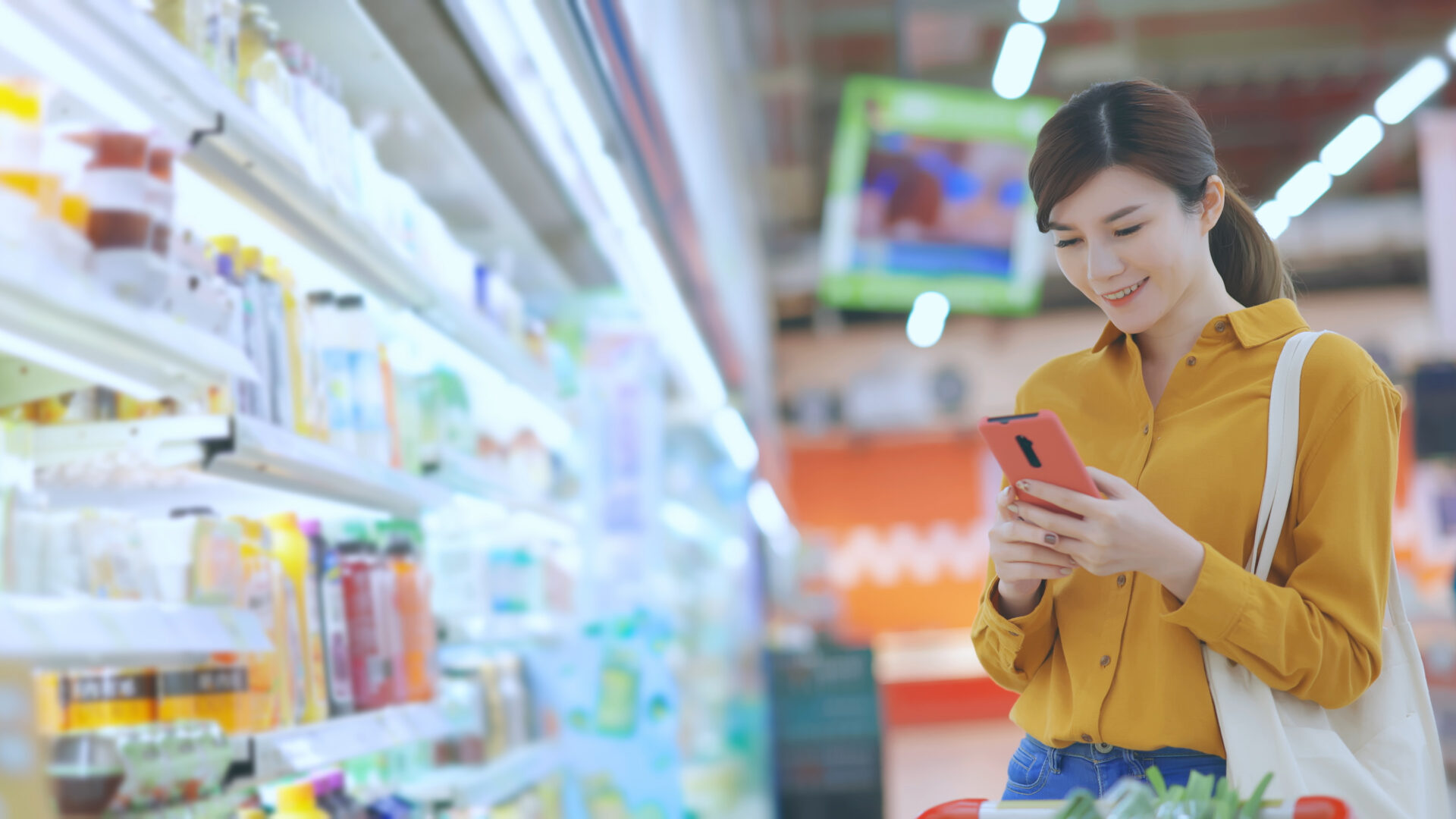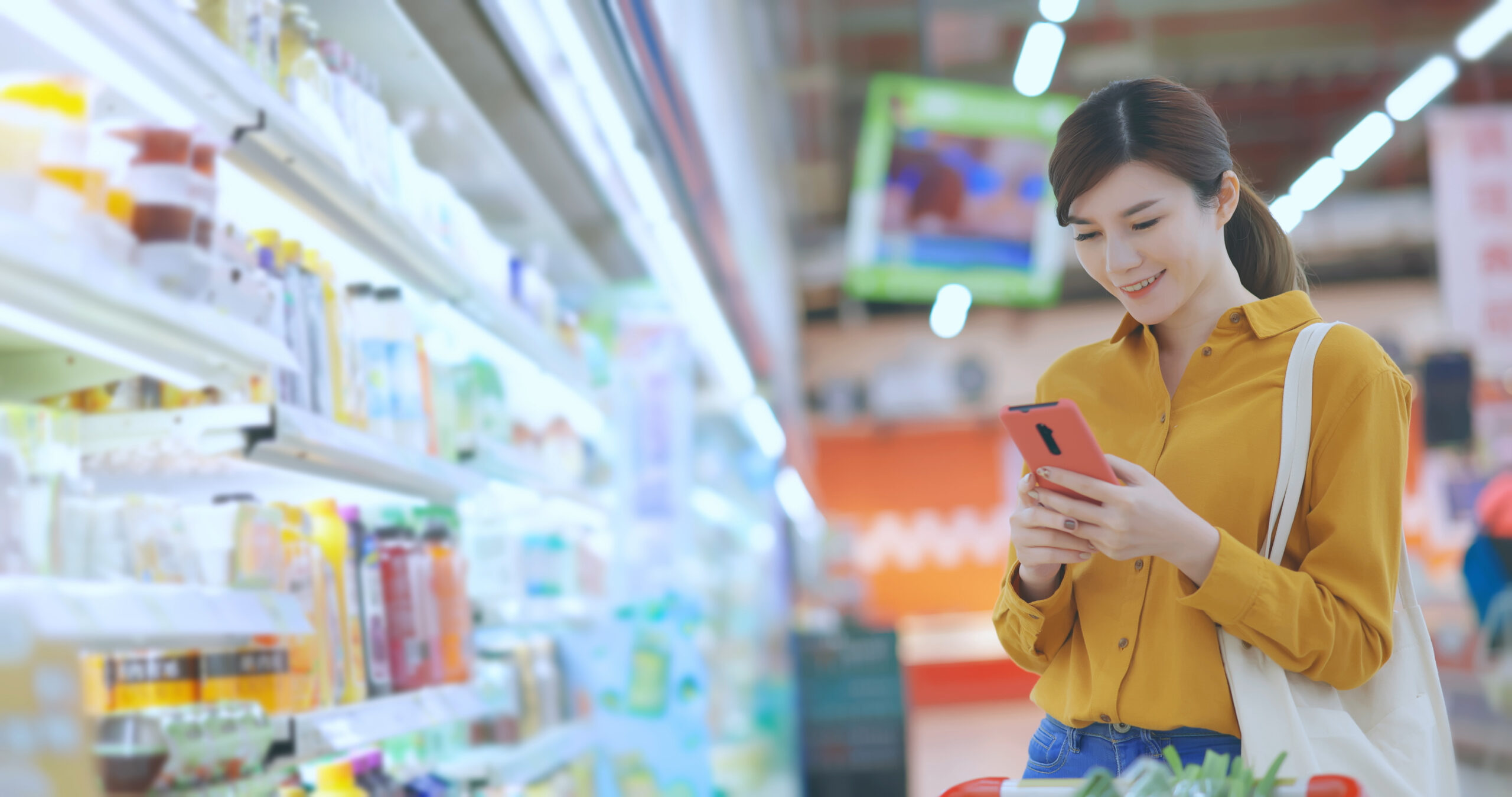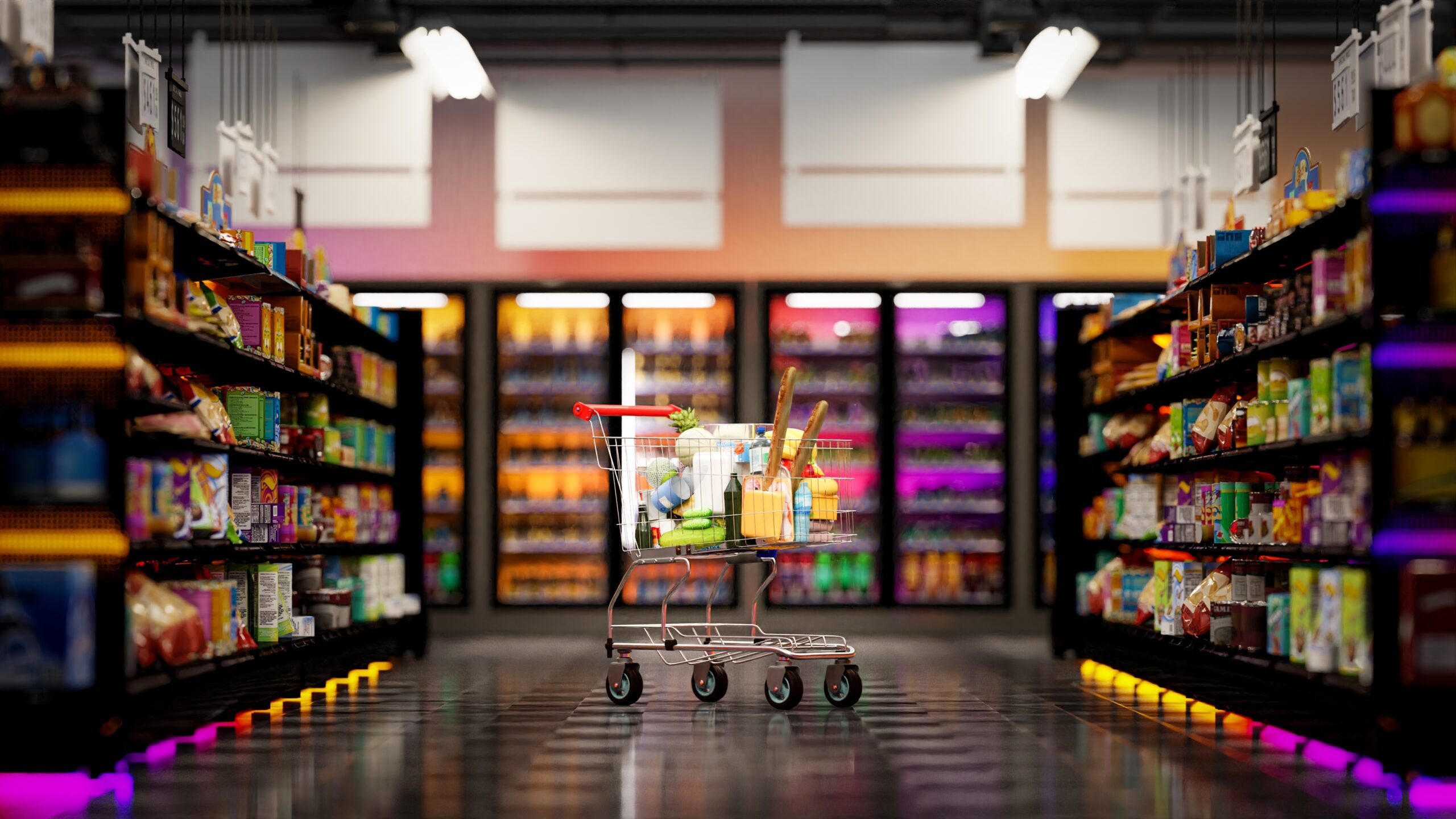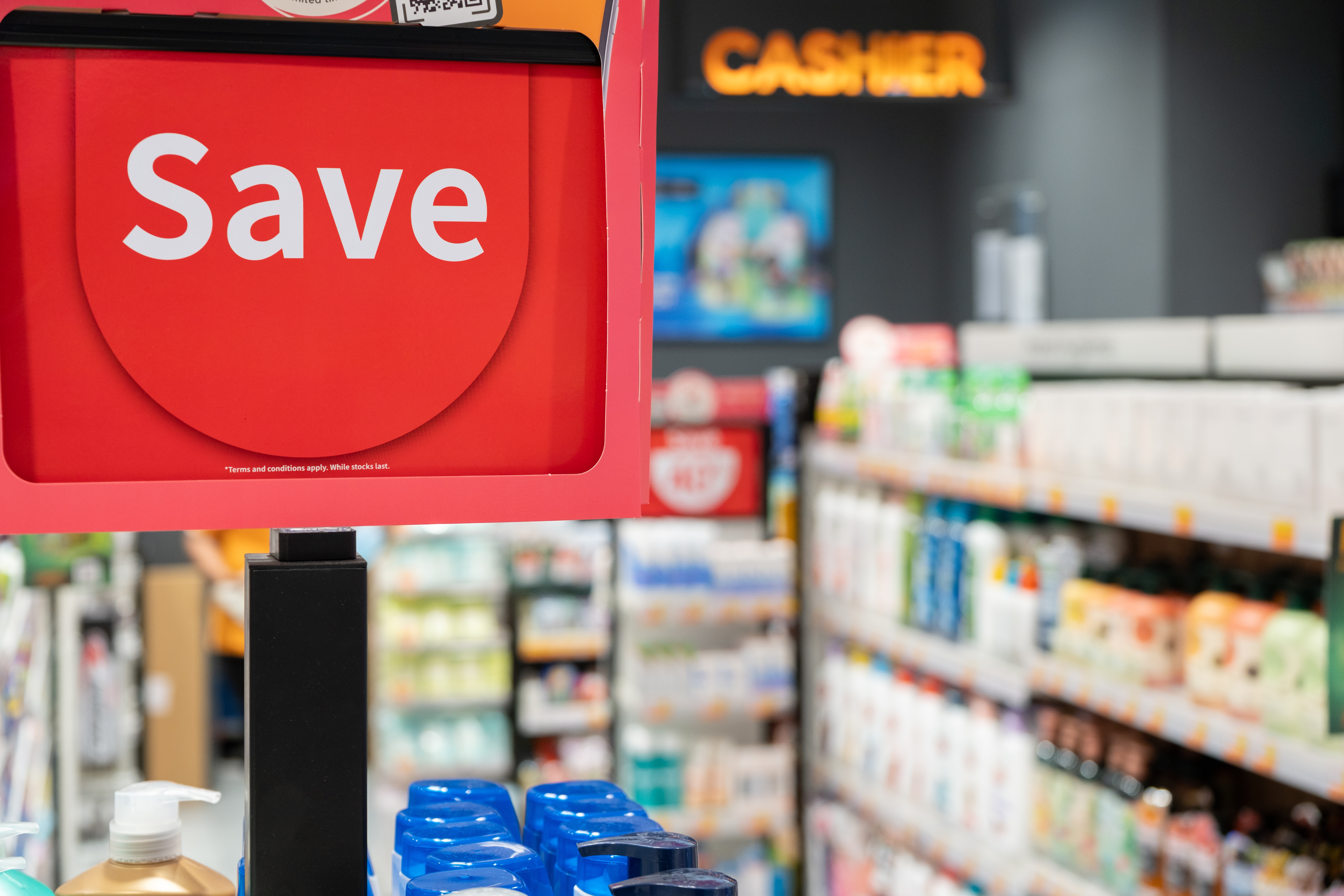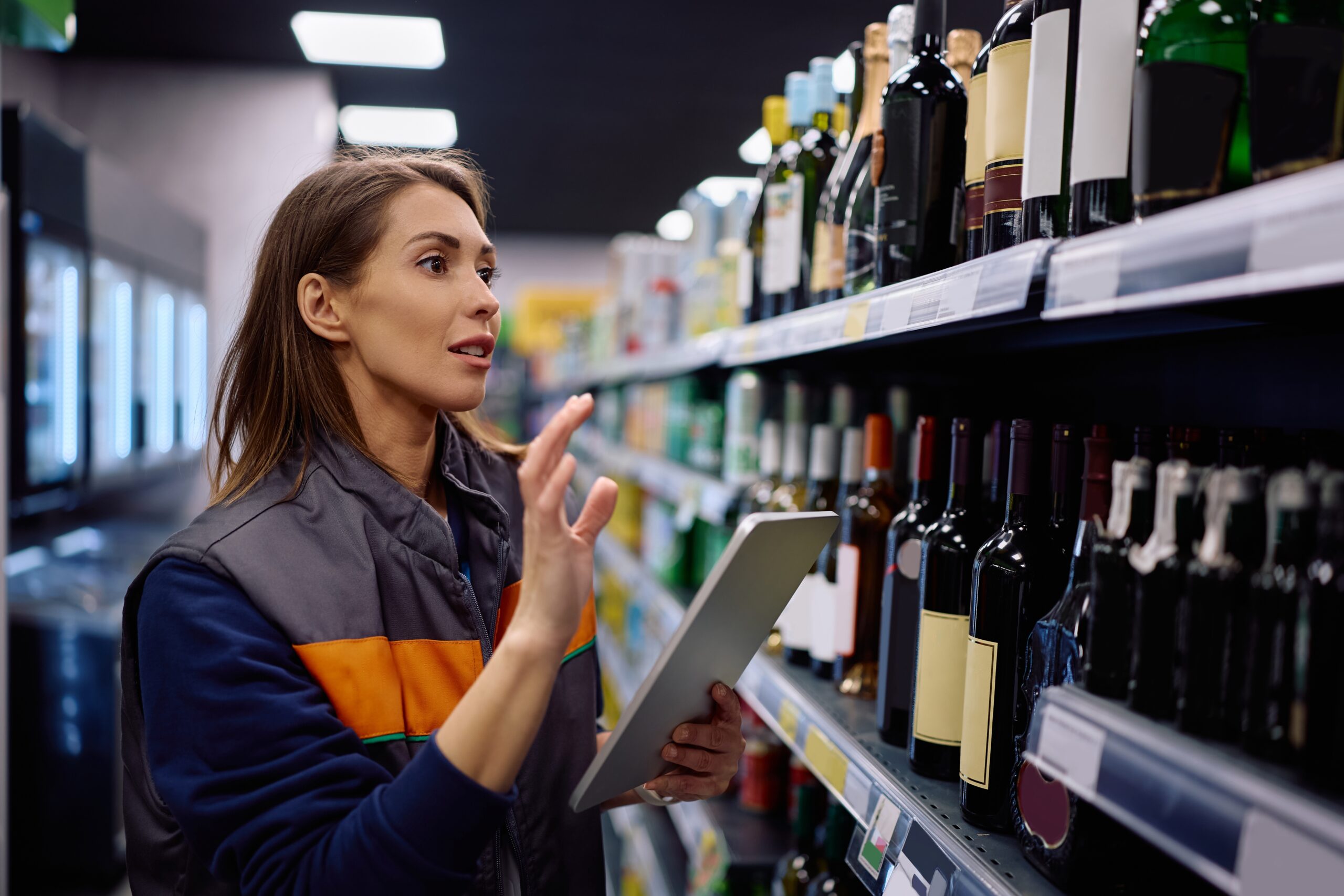Every square foot of a grocery store holds untapped potential to influence purchasing decisions and boost sales. Meanwhile, customers expect an efficient, engaging in-store experience. Strategic decisions about signage, retail displays, and gondolas can influence purchasing behavior and keep customers coming back. Every detail, from new product showcases to checkout displays, matters when it comes to shaping customer satisfaction and driving repeat business.
That’s why retailers without a well-planned merchandising strategy end up leaving money on the table.
In this post, we’ll explore key merchandising techniques that grocery retailers can use to boost sales, increase customer loyalty, and ensure a seamless experience. We’ll dive into the value of visual merchandising, cross-merchandising strategies, and planograms to transform aisles into high-performing sales engines. With the right merchandising displays and thoughtful store layout, brands and retailers can thrive and outperform the competition.
Grocery Store Merchandising Tactics to Maximize Sales
Leverage Cross-Merchandising for Impulse Buys
Cross-merchandising is one of the most effective retail merchandising techniques to encourage impulse purchases. This classic strategy of placing complementary products together—like chips next to salsa or deli meats alongside fresh bread—helps customers easily discover combinations they might not have planned on buying. Retailers looking to take their cross-merchandising to the next level, however, should go beyond the basics and embrace occasion-based bundles.
Imagine this: Instead of simply placing wine near cheese, you create an enticing “Date Night Bundle” with pasta, marinara sauce, Parmesan, and red wine, displayed with romantic-themed signage, or a “Taco Tuesday” station featuring tortillas, avocados, ground beef, shredded cheese, and margarita mix. These bundles speak directly to specific moments in your customers’ lives, making it easy for them to buy everything they need for that occasion. It’s not about just pairing products; it’s about curating a complete experience.
The beauty of this strategy lies in its ability to reduce decision fatigue while guiding customers toward unplanned purchases. A shopper who may have walked in for just a bag of chips could leave with a fully stocked game-day spread, thanks to your “Big Game Essentials” bundle of chips, dips, soda, and finger foods. Additionally, placing these bundles in multiple locations—like near the entrance or checkout—ensures that they capture attention at key touchpoints throughout the shopping journey.
Use Rotating Hot Spots to Keep Customers Engaged
Product placement plays a vital role in grocery store merchandising. For example, items positioned at eye level are far more likely to catch attention, making this prime real estate for high-margin or new products. Some stores take it a step further by placing children’s items at their eye level, subtly encouraging kids to influence their parents’ purchasing decisions. However, savvy retailers know there’s more to product placement than setting it and forgetting it. Enter rotating hot spots.
Rather than leaving the same products in prime locations indefinitely, grocers can introduce rotating placements that create an ongoing sense of discovery. Imagine dedicating an endcap to “Weekly Must-Haves,” where new, seasonal, or trending products rotate in every week. Or feature a “Snack of the Month” section in a high-visibility area, routinely refreshing what’s on display to keep regular shoppers curious and engaged. In addition to maximizing product visibility, these rotating displays create a sense of urgency, as customers know the spotlighted items won’t be there for long. This placement shift can transform an ordinary shopping trip into an experience where customers feel like they’ve come upon something new, increasing their likelihood to purchase.
Turn the Back of the Store into a Discovery Zone
Placing staples like milk, eggs, and bread at the back of the store is a tried-and-true tactic in grocery merchandising. It’s designed to guide customers through multiple aisles, increasing their exposure to other products along the way. But instead of treating the back of the store as just a destination for essentials, consider transforming it into a discovery zone—a place where familiar staples meet exciting new possibilities.
Rather than having the dairy aisle end with just milk and butter, for instance, introduce limited-time pairings or bundled deals. Surround the milk section with new cereals, organic granola, or seasonal flavors of yogurt. A small pop-up display with recipe cards featuring weekend brunch ideas could inspire shoppers to grab extra items such as fresh fruit, artisanal bread, and specialty coffee. The essentials are still there, but now they serve as a jumping-off point for more creative and higher-margin purchases.
Additionally, retailers can experiment with rotating themes near staple items. Position baking supplies near bread and eggs during the holiday season, or place fresh herbs and exotic produce near dairy to promote cooking at home. These subtle suggestions will not only drive impulse purchases but also boost customer satisfaction by adding a sense of novelty to routine grocery runs.
By turning the back of the store into a discovery zone rather than just a necessity stop, retailers elevate the shopping experience and encourage customers to think beyond their lists. When executed well, this strategy can increase basket size, introduce shoppers to new products, and elevate essential errands into opportunities for exploration and enjoyment.
Create Pop-Up Experiences That Surprise Shoppers
Mobile display units are already a versatile tool in grocery store merchandising, offering flexibility to showcase seasonal or promotional items in high-traffic areas. But to truly take this strategy to the next level, think beyond static product placement and transform your mobile displays into rotating pop-up experiences that surprise and delight shoppers throughout their journey.
Instead of simply placing a display near the deli with gourmet crackers or near checkout with chocolates, try turning the mobile unit into a temporary themed event. One week the display near the deli could feature “Movie Marathon Munchies” – with popcorn, candy, specialty sodas, and cozy blankets, while the next week it becomes “Charcuterie Central” with artisanal meats, crackers, and spreads. These changing themes not only drive repeat visits but also spark curiosity among regular customers, enticing them to explore what’s new.
Mobile displays can also serve as dynamic sampling stations. A rolling cart offering quick tastes of new energy drinks or locally made snacks can move throughout the store, from the produce aisle to checkout. Shoppers love free samples, and introducing them through mobile units adds an interactive element that boosts engagement and product trial. Grocers can also use these mobile units for flash sales or “happy hour” promotions. Imagine a display near the checkout announcing “Half-Price Sweets—Today Only!” or a morning coffee station offering discounted pastries until noon. These time-sensitive offers drive urgency and encourage both impulse purchases and repeat visits.
Create Immersive Tasting Events and Cross-Sell Bundles
Why stop at samples on a table or a rolling cart? Take your sampling strategy to the next level by creating immersive tasting events that engage customers and encourage multi-item purchases.
Themed events are one way to amp up your sampling efforts. During a “Mediterranean Night” tasting event, for example, you could offer samples of hummus, pita bread, and olives while showcasing a mobile display of wine, crackers, and dips nearby. This transforms a quick taste into a full experience, inspiring customers to recreate the entire concept at home by purchasing several complementary products.
Sampling can also become more interactive through guided tastings. Enlist knowledgeable staff or brand representatives to guide customers through a product experience, such as pairing specialty cheeses with local wines or chocolates. These guided tastings help educate shoppers, increasing confidence in premium or unfamiliar products, which translates to higher-value purchases. Yet another way to elevate the sampling experience is by bundling samples into ready-made kits. For example, after offering samples of a seasonal pumpkin spice spread, sell a “Fall Breakfast Kit” that includes the spread, fresh bread, and flavored coffee at a discounted bundle price. The convenience of a curated set makes it easier for customers to say yes—and increases the likelihood of multi-item purchases.
To create urgency, implement “limited-time sampling hours.” Promote special tasting sessions on social media or through in-store signage such as “Try Our New Holiday Cookies Today, 2-4 PM!” This creates anticipation, draws foot traffic, and makes the sampling experience feel like an exclusive event.
Take Color-Coded Sale Stickers to the Next Level with Personalized Promotions
While red-and-yellow sale stickers are classic tools for triggering urgency, you can enhance this strategy by also incorporating personalized promotions by leveraging digital signage or electronic shelf labels that change dynamically. For example, during weekday mornings, a product could feature a “Morning Special” discount to capture early-bird shoppers, then in the evening shift to “Dinner Deal” pricing for after-work crowds. These updates keep promotions relevant and encourage multiple visits throughout the week, maximizing traffic flow and sales opportunities.
Taking this strategy even further, grocers can offer personalized discounts based on customer loyalty data. With data insights, you could generate individual promotions for frequent shoppers—like a limited-time coupon for their favorite yogurt brand flashing on the shelf as they walk by. This approach not only deepens customer loyalty but also ensures products align with their tastes, minimizing the chance of missed sales.
Integrating color psychology with digital tools heightens the effectiveness. For instance, using yellow “Flash Sale” labels to highlight discounts valid only for an hour creates urgency; red “Final Clearance” labels positioned on overstock items encourage customers to act fast before stock runs out. To enhance engagement, grocers can gamify the experience by offering exclusive discounts through QR codes attached to sale stickers, giving shoppers a small thrill with each scan. This blend of traditional color-coded visuals with smart, dynamic pricing systems keeps your store ahead of trends, providing a fresh shopping experience each time customers visit.
Promote Store Brands on Endcaps and Dump Bins
Endcaps and dump bins are not just for showcasing national brands; they’re also a strategic opportunity to promote store-brand products. Placing store brands alongside well-known products encourages customers to try the more-affordable option, increasing store-brand loyalty. Dump bins near checkout areas featuring clearance or “to go” items offer convenience while reinforcing the perception of value. Store owners who use these retail merchandising tactics effectively can boost sales and profit margins simultaneously.
Leveraging AI to Supercharge Grocery Store Merchandising Strategies: the Ultimate Hack
Even with the best grocery store merchandising strategies, getting everything right the first time is a challenge. Traditional merchandising methods rely heavily on past sales data, manual planning, and intuition, and they can take weeks or months to execute and refine. But with growing competition from ecommerce, in-store retailers need to respond faster than ever. There’s little room for trial and error. This is where AI-powered solutions transform the game, enabling retailers to streamline processes, make data-driven decisions, and deliver high-quality merchandising results from day one.
AI allows grocers to test, adjust, and optimize shelf configurations without lengthy delays. With tools such as InContext’s Arrangement AI, retailers and brands can analyze customer behavior, identifying which products drive impulse buys, how customers navigate the aisles, and which placements lead to the highest conversions. Instead of waiting weeks for sales data, AI enables you to predict which seasonal items will perform best on endcaps or which product bundles will encourage the most additional purchases. This technology helps optimize planograms faster, ensuring grocery store shelves are always stocked with high-performing products that align with customer expectations.
Additionally, AI offers insights into customer flow. Predictive analytics can suggest where to place new or high-margin items, such as at entrances or on frequently trafficked routes, to encourage exploration and drive higher sales. AI can also fine-tune aisle arrangements by analyzing which products attract attention at eye level and recommending adjustments to capitalize on shopper behavior. This reduces bottlenecks, encourages product discovery, and improves the overall customer experience.
AI further enhances merchandising strategies at the checkout area. By analyzing time of day, seasonality, and purchase history, AI tools recommend which impulse buys—such as snacks, greeting cards, or store-brand items—will perform best. This allows retailers to use their checkout counters to their fullest potential, capturing last-minute sales and boosting profitability.
In the end, AI allows grocery retailers to make smarter decisions faster. By leveraging data, predictive modeling, and automated recommendations, retailers can test multiple strategies simultaneously and land on the best solutions without wasting time. Whether you’re refining store layouts, optimizing product placement, or managing seasonal promotions, AI ensures every merchandising display drives maximum impact—keeping your store competitive in today’s fast-paced retail landscape.
Get Started with InContext
Success in grocery retail hinges on getting every detail of your merchandising strategy just right. From cross-merchandising complementary products to carefully planning layouts that drive impulse buys, execution is key. Without the right tools, even well-thought-out plans can fall short, costing you time, revenue, and customer satisfaction.
AI-powered solutions from InContext remove the guesswork, enabling you to test, refine, and perfect your merchandising strategies faster than ever. With data-backed insights and recommendations, you can make smarter decisions that optimize every aisle and enhance the customer experience.
Stay ahead of the competition by partnering with InContext. Let our advanced tools transform your grocery store into a sales engine, creating frictionless shopping experiences that keep customers coming back and drive your bottom line higher.
